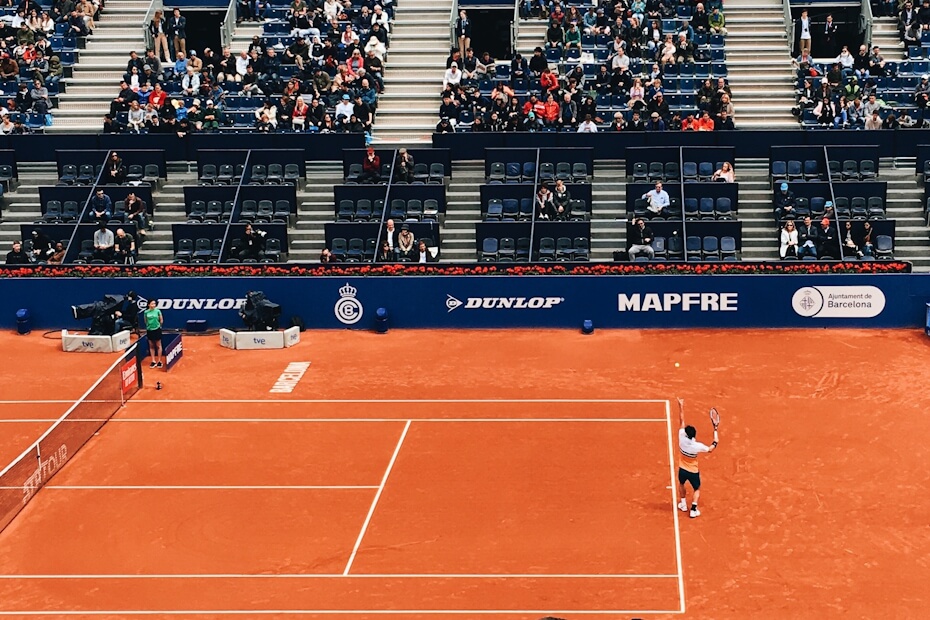Tennis has a unique system that ensures fair competition among players. This system, known as “seeding,” is a fundamental aspect of tennis tournaments, from the local club level to the prestigious Grand Slam events.
What Does Seeding Mean in Tennis?
Seeding in tennis involves assigning rankings to players based on their performance and skill level. The top-ranked players are given higher seeds and placed strategically in the draw to avoid facing each other in the early rounds. This system ensures that the best players do not eliminate each other in the initial stages, hence increasing the chances of top-ranked players reaching the final stages.
The number of seeds in a tournament varies. For instance, in Grand Slam tournaments, 32 players are seeded, while smaller tournaments may seed only eight or sixteen players.
Why is It Called Seeding?
The concept of seeding comes from the traditional agricultural practice of dispersing seeds evenly across a field to ensure optimal growth and productivity. In the context of tennis, seeding allows for a fair and competitive tournament by preventing the top-ranked players from facing each other in the early rounds.
The term “seeding” itself originates from its correlation with this agricultural practice. Just as seeds are spread strategically to maximize growth, tennis players are positioned strategically in the tournament bracket to avoid lopsided matchups in the early stages.
By organizing players based on their skill level, seeding ensures that the tournament unfolds in a way that rewards the most accomplished and deserving players, ultimately leading to a more exciting and competitive event.
Why is Seeding Important?
Seeding in tennis holds great significance from the perspective of tournament organizing and competition structure. Here are a few reasons why it is important:
- Fair competition: Seeding helps create a balanced draw by separating the top-ranked players and spreading them across different sections of the tournament bracket. This ensures that the strongest players have a better chance of advancing further in the tournament.
- Enhanced spectator experience: Seeding allows fans and spectators to witness high-quality matches between top players in the later stages of the tournament. This increases excitement and interest as fans get to see intense battles between the best competitors.
- Incentive for players: Seeding provides recognition and rewards to players who have consistently performed well. It motivates them to maintain their ranking and strive for better results, as higher seeds generally receive more favorable draws.
- Reduced early upsets: By placing top-ranked players away from each other in the early rounds, seeding helps minimize unexpected upsets and ensures that deserving players progress deeper into the tournament.
Overall, seeding plays a crucial role in maintaining fairness, competitiveness, and excitement in tennis tournaments. It rewards consistent performance, provides thrilling matchups, and gives players a fair chance to showcase their skills on the grand stage.
Advantages and Disadvantages of Being a Seeded Player
Seeding offers several benefits for players, including:
- Protected early rounds: Seeded players are typically given a bye in the first round, which means they automatically advance to the second round without having to play. This gives them more time to rest and prepare for the later stages of the tournament.
- Easier initial matchups: By being seeded, players are more likely to face lower-ranked opponents in the early rounds. This can provide them with a relatively easier path to progress deeper into the tournament.
- Increased visibility and recognition: Seeded players often receive more media attention and coverage, which can help raise their profile and attract sponsorship opportunities. This exposure can also lead to higher fan support and a larger following.
While being seeded offers numerous advantages, there are also some potential downsides for players. One disadvantage is the added pressure that comes with expectations of performing well as a higher-ranked player. This pressure can sometimes lead to anxiety and affect a player’s performance on the court.
Additionally, being seeded means facing tougher opponents as the tournament progresses. As higher-ranked players are expected to reach later stages, they often encounter stronger competition, which can pose a greater challenge.
How Does Seeding Work in Tennis?
The seeding system in tennis is primarily based on a player’s ranking. The Association of Tennis Professionals (ATP) and Women’s Tennis Association (WTA) rankings are usually considered when determining seeds for tournaments. These rankings are updated weekly and are based on a player’s performance over the past 52 weeks.
While ATP and WTA rankings play a significant role in seeding, other factors may also be considered. These can include a player’s previous performance at the same tournament or their recent performance on similar surfaces. For instance, a player who has historically performed well on grass might receive a higher seed at Wimbledon.
In most tournaments, only a certain number of players are seeded. For example, in Grand Slam tournaments, 32 players are seeded, while smaller tournaments might only seed 16 or even just eight players. The highest-ranked players are given the lower seed numbers, with the world number one player always being the top seed.
This system affects how brackets and matchups are formed. For example, in a tournament with 32 players, the top seed will be placed at one end of the draw, while the second seed will be placed at the opposite end. This ensures that if both these players continue to win their matches, they won’t face each other until the final round.
Seeding in Grand Slam Tournaments

Each of the four Grand Slam tournaments – Australian Open, French Open, Wimbledon, and US Open – has its unique way of seeding players. The Australian and US Open follow the ATP and WTA rankings strictly. The French Open also adheres to these rankings but with minor adjustments for players who excel on clay courts.
Wimbledon is unique. It uses a formula that considers a player’s ATP or WTA ranking and their performance on grass courts over the past two years. This method often results in interesting seedings that differ from other tournaments.
The number of seeds in a Grand Slam tournament is typically 32 for both men’s and women’s singles events. The allocation process is straightforward. The top-ranked player gets the first seed, the second-ranked player gets the second seed, and so forth until all 32 seeds are assigned.
Has an Unseeded Player Ever Won a Grand Slam?
While it’s relatively rare, there have been instances where unseeded players have cliched Grand Slam titles. The open era of tennis has seen a total of five men and seven women win Grand Slam titles while unseeded.
In 1976, Mark Edmondson became the first unseeded player to win a Grand Slam in the open era by clinching the men’s singles title at the Australian Open. Despite being ranked 212th globally at the time, his triumph remains one of the most noteworthy examples of an unseeded player succeeding at a Grand Slam tournament.
On the women’s side, Chris O’Neil, an unseeded player, became the first Grand Slam champion by defeating 7th seed Betsy Nagelsen in straight sets to win the Australian Open in 1978.
Another extraordinary example is Andre Agassi, who succeeded at the 1994 US Open despite being unranked. This victory marked his second Grand Slam title, following his win at Wimbledon in 1992 as a seeded player.
These examples, while rare, highlight the unpredictability of tennis and stand as a testament to the fact that rankings do not always dictate the outcome. With perseverance, talent, and a bit of luck, even an unseeded player can etch their name into Grand Slam history.
Controversies and Debates Surrounding Seeding
Over the years, there have been several controversies and debates surrounding seeding decisions in tennis.
Despite its widespread use, the seeding system has been met with criticism. Critics argue that it gives an unfair advantage to higher-ranked players by protecting them from tough competition in the early stages of a tournament. This, they claim, undermines the spirit of competition and unpredictability that makes sports exciting.
Moreover, critics point out that the current system relies heavily on recent performance, which may not reflect a player’s true potential or skill level. For instance, a player recovering from an injury may be seeded lower despite being highly skilled.
Given these criticisms, discussions around alternative approaches to seeding have gained traction. One such proposal is the random draw system. This method would assign players to brackets randomly, regardless of their ranking. Proponents argue that this would level the playing field and make tournaments more exciting.
Another proposed alternative is a hybrid system that combines elements of both seeding and random draw. This could involve seeding only a few top players and randomly drawing the rest.
While the current seeding system has its merits in ensuring top players do not eliminate each other early on, it also has its drawbacks. As such, discussions around alternative approaches continue to be relevant in the ever-evolving world of tennis.
Seeding in Doubles and Mixed Doubles
In doubles and mixed doubles events, seeding is slightly different from singles. The combined rankings of both players on a team are taken into account when determining seedings. The Association of Tennis Professionals (ATP) and the Women’s Tennis Association (WTA) use this method for their tournaments.
The process begins with the tournament committee, which compiles a list of teams based on their combined rankings. The teams with the highest combined rankings are then given seeds to ensure they don’t face each other in the early rounds.
Remember, seeding is not an exact science. It’s a strategic tool used by tournament organizers to create an exciting and balanced competition for both players and spectators alike. It adds an extra layer of intrigue to doubles and mixed doubles events, making them just as thrilling as their singles counterparts.







